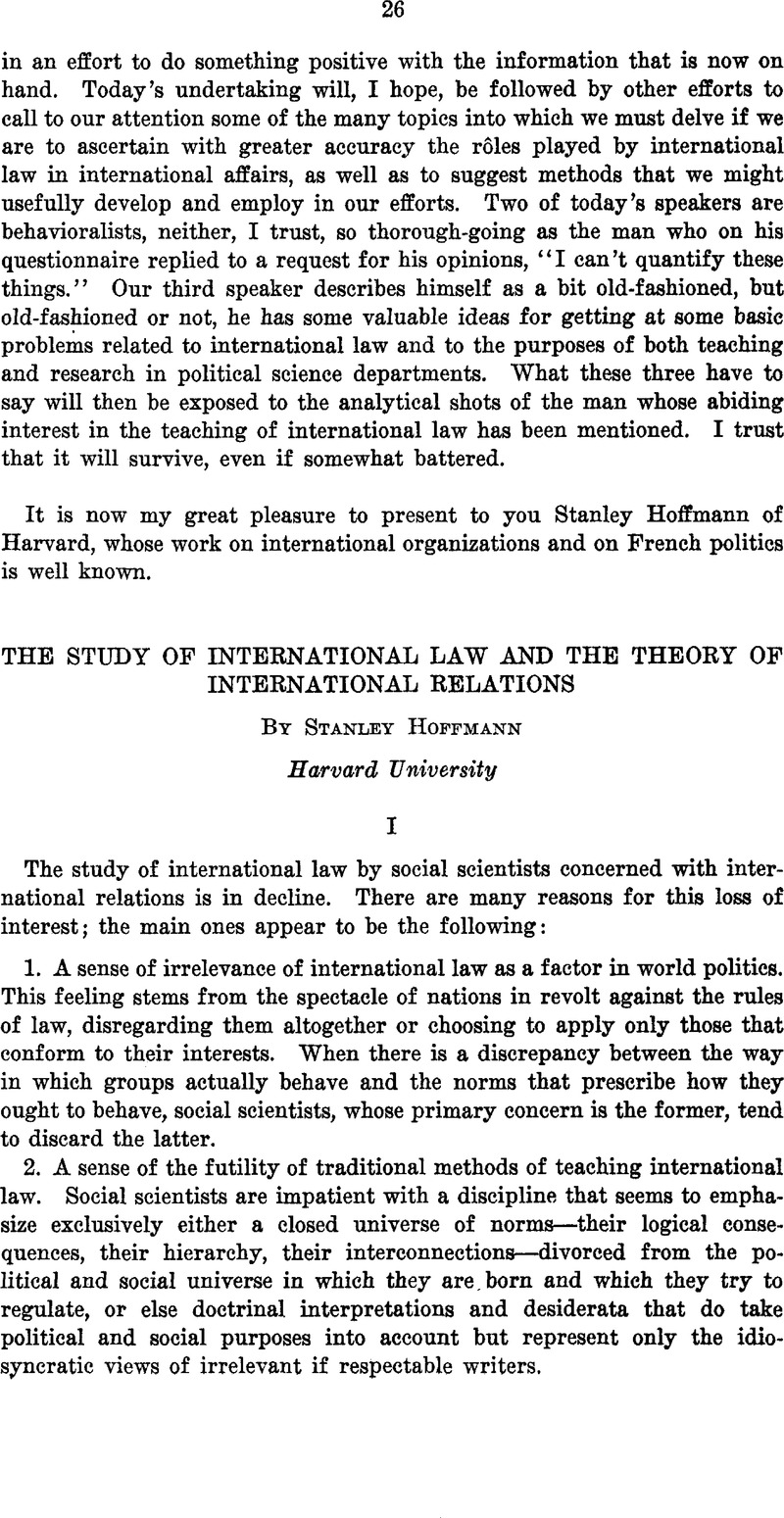Article contents
The Study of International Law and the Theory of International Relations
Published online by Cambridge University Press: 27 February 2017
Abstract

- Type
- First session
- Information
- Copyright
- Copyright © Royal Aeronautical Society 1963
References
1 For more details, see the writer's essays in Contemporary Theory in International Eelations (Prentice–Hall, 1960); “Thfiorie et Eelations internationales” in Revue Franchise de Science Politique, June, 1961, and especially “Minerve et Janus,” in Critique, Jan. and Feb., 1963.
2 See Aron's Paix et Guerre (Paris, 1962).
3 For an attempt at showing this, see Richard N. Rosecrance, Action and Reaction in World Politics (Little, Brown, 1963).
4 This point is well made by Robert W. Tucker in his review of Kaplan and Katzenbach's Political Foundations of International Law (John Wiley, 1961): see the Journal of Conflict Resolution, Vol. VII, No. 1 (March, 1963), pp. 69 ff.
5 On this point, see Aron, op. oit., Ch. XXIII.
6 A brief but fine example of an analysis of this sort by an international lawyer is Oliver J. Lissitzyn's “International Law in a Divided World,” International Conciliation, No. 542 (March, 1963).
7 Since the competition reqnires restraints and cooperation, along with antagonisms and violence, this remark does not suggest that the most important rules are the shakiest (although it is often the case).
8 See the author's “International Systems and International Law” in Knorr and Verba (ed.), The International System (Princeton, 1961).
9 Such as human rights today; the same remark applies to proposals to expand international adjudication.
10 This has been Julius Stone's argument in many of his recent works.
11 In the subject matter covered by all types of “public” law, the balance between “arbitrary” domains (unregulated by law) and law-regulated sectors tends to be weighted against the latter, and law itself is only partially the expression of generally accepted standards of justice: the more open and organized conflict we find, the greater the range of arbitrariness and the smaller the consensual quality of the law.
- 2
- Cited by




